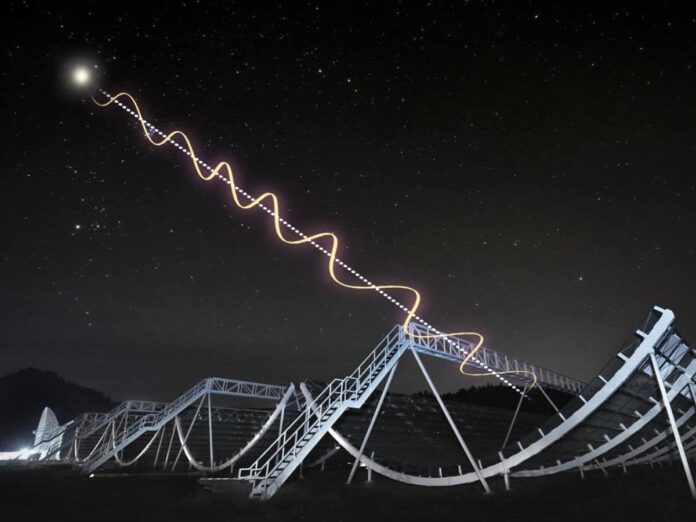
International Team Unveils Surprising Findings on Fast Radio Bursts
An international team of researchers, including a scientist from the Netherlands, has compared the polarization of light from non-repeating fast radio bursts with that of repeating ones. The results were quite unexpected.
Published in The Astrophysical Journal, the study examines the polarization – or the direction of vibration – of light from 128 non-repeating fast radio bursts. Measuring the polarization of light is challenging, but it can provide insights into the origin of the bursts and offer a snapshot of all the magnetic fields the light has encountered on its journey.
Methodology
To gain more insight into the origins of fast radio bursts, scientists focused on the polarization of light from 128 fast radio bursts that had only occurred once. They utilized data collected by CHIME, a Canadian radio telescope.
The Results
The study revealed that of the 128 fast radio bursts examined, 89 emitted clearly linearly polarized light. Another 29 showed little or no polarized light, and for the remaining 10 sources, the signal was too disturbed to draw conclusions about the polarization.
Comparison with Repeating Bursts
Because previous research had already analyzed the polarization of repeating fast radio bursts, the researchers were able to compare their 128 single bursts with the previously studied repeating ones. This comparison led to a surprising discovery, as researcher Ziggy Pleunis explains, “To our surprise, there were no clearly observable differences in the polarization between the non-repeaters and the repeaters. This is surprising, considering previous research had shown differences in duration and bandwidth between non-repeaters and repeaters, so we expected to find a clear difference in polarization as well.”
Potential Common Origins
The lack of clear polarization differences suggests that repeating and non-repeating fast radio bursts might be more similar than previously thought. “It is possible,” Pleunis speculates, “that repeating and non-repeating bursts share the same origin.”
Non-Repeating Bursts: Inactive Repeaters?
If this is the case, non-repeating bursts might have once been repeating bursts, now occurring less frequently. Another possibility is that non-repeating bursts exist in less extreme environments and therefore flash less often. More research is needed to elucidate these possibilities
Insights into Origins
The research by Pleunis and colleagues also sheds light on the origins of non-repeating bursts. There is strong evidence suggesting that these bursts are found in galaxies with low density and modest magnetic fields. “These galaxies are very similar to our own Milky Way,” notes researcher Ayush Pandhi.











